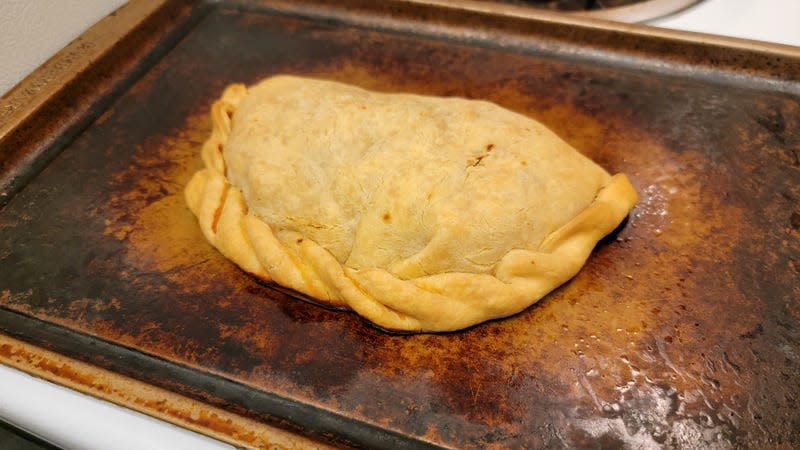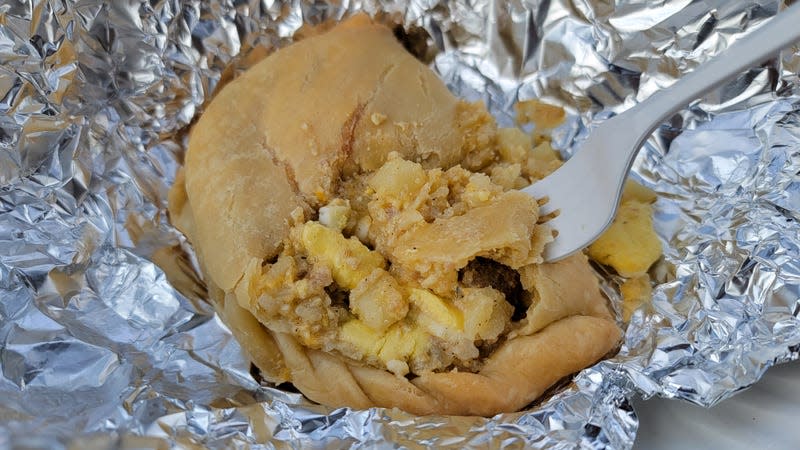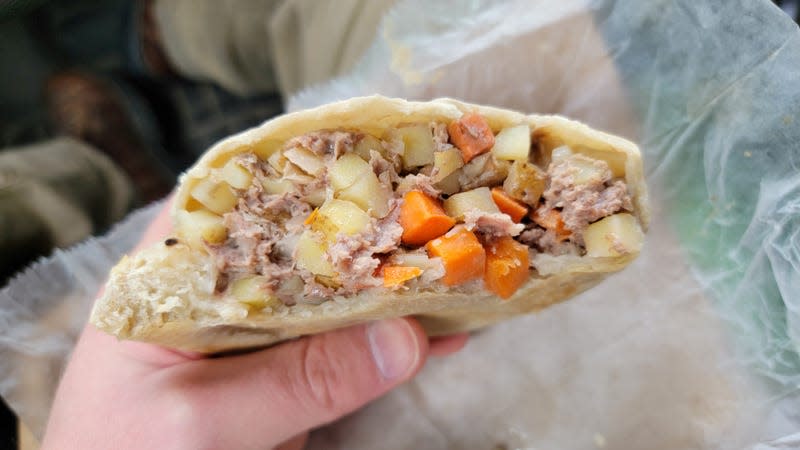Meet Michigan’s Pasty, One of the Most Underrated Foods of the Midwest

Pasty. Pass-tee. Not “pace-tee,” the citizens of Michigan’s Upper Peninsula are quick to point out. Beef, potatoes, onions, and turnips baked into a crispy golden crust—sound it out, and you’ve got something that sounds delicious.
As we’ve pointed out before, nearly every culture has a hand pie to call its own. We can debate the merits of turnovers, strombolis, empanadas, and calzones, but let me ask you this: Were any of those pies featured in one of the best movie scenes ever filmed? This goofiness alone makes them worth a try.
Read more
The Michigan pasty, explained
While the origins of the pasty are unclear, the treat is a favorite scion of its adopted home of Cornwall, England. It’s composed of a sturdy crust, folded over a mixture of meat and veggies and crimped into a thick lip that’s said to have served as a handle for the dirty hands of copper miners.
But I didn’t go to Cornwall to grab a pasty. Because if jolly old England is the source of the recipe, the Upper Midwest is unquestionably the home of its most venerated stateside version. I had the chance to sample this regional treat at two locations, Dobber’s and Gram’s, while visiting Escanaba, Michigan for the Upper Peninsula’s UPtoberfest beer and wine festival. Each pasty was definitely tasty—but it turns out I was breaking the rules the entire time.

What goes into a traditional Cornish pasty?
Like many culinary touchstones, the pasty has an organization dedicated to protecting its roots. Here’s a bit about The Cornish Pasty Association, straight from its website:
“Originally created by a collective of Cornish pasty producers concerned about the number of products being sold across the country as ‘Cornish Pasties’ despite bearing no resemblance to the real thing, the Association now administers the PGI designation granted in 2011 by the EU and is here to help anyone who would like to make, buy, sell or find out more about Cornish pasties.”
So, what does the “official” version of a Cornish pasty look like? The recipe calls for a mix of raw, diced skirt steak and similarly sized bits of onion, potato, turnip (also called swede), and a discretionary pinch of salt and pepper. You can vary the beef-to-veg ratio, so long as it maintains the minimums of 12.5% meat and 25% vegetables.

There’s a bit more wiggle room with the dough, which can be “shortcrust, rough puff or puff, but it has to be savoury and able to withstand baking and handling without breaking.”
Whichever you choose, the CPA insists that the crust itself must be crimped: “If it’s not crimped, it’s not Cornish.”

How the Michigan pasty breaks from tradition
But wait a minute. Doesn’t a Cornish pasty contain carrots? While the CPA says no, citizens of the UP say “Oh, you betcha.” Two of the three pasties I enjoyed had bits of carrot included in the filling, though Gram’s also serves one without, along with other veggie and mac & cheese pasties.
And these are far from the wildest variations. According to this wonderful video from Michigan Tech (wait for the punch sound effects), some miners’ wives used to make their pasties one-quarter sweet. With dessert fillings stuffed into one corner of the crust, the workers were able to enjoy a sugary follow-up to the richness of meat and potatoes.
Carrots and sweetness aside, perhaps the greatest variation is this:

That’s right: a breakfast pasty. This example was purchased from Dobber’s, featuring a “combination of scrambled eggs, potatoes, cheddar cheese, seasoned pork sausage, onions, and salt & pepper.” I’d already eaten breakfast when I rolled into the parking lot, but this second breakfast was better.
I also snagged a frozen version with chicken, which baked up beautifully once I got home. And while you can order pasties online, I began to wonder how I could make this UP specialty on my own.

Pretty simply, as it turns out. Chef John, one of the patron saints of YouTube cookery, has an interesting guide over at the Food Wishes channel. His gleeful disregard for (just a few) of the traditional rules is not only charming, but also helps streamline the process for home cooks.
A trip to Michigan’s pasty shops makes it clear that the pasty deserves its place among the portable pies of the world. It does everything a good handheld meal should do: stick together, stay warm, and offer a variety of flavors and textures. Whether you cling to tradition or crave something different and new, the pasty can deliver the goods.

